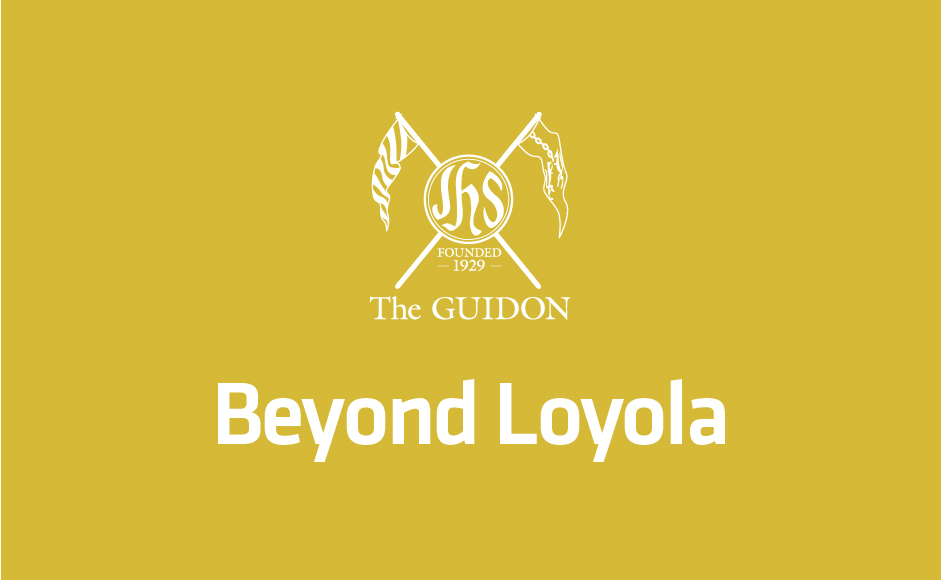OVER 100 sociology students from various universities in and near Metro Manila attended “Mga Kuwento ni Lolo Kiko: A Forum on Youth, Religion and#PopeFrancisPH” held at the University of the Philippines (UP) Diliman, Quezon City, on January 31.
A collaboration of the Philippine Sociological Society (PSS), the PhilippineLeague of Sociology Students (PLSS) and Socio Sphere, the forum was held to explore the sociological implications of Pope Francis’ visit to the Philippines from January 15-19, particularly how it had resonated with the youth.
The three-hour forum looked into four themes of the papal visit, namely,impressions and observations of the youth, #PopeFrancis as popular piety, thePope Francis effect and the future of Catholicism in the Philippines.
“Rockstar treatment”
The most common observation among youth attendees was the rockstar treatment of the Pope, be it from the masses or even from people in the media. Most of the students present only witnessed the apostolic visit through their television sets, some even merely on the radio.
Manuel Sapitula, PhD, an expert in popular religion and panelist during the forum, relayed,“Parang pumunta ‘yong aura ni [PopeFrancis] kahit sa TV (It was like Pope Francis’ aura was transmitted through the television).”
This attributed to the “materiality” of popular worship. According to Sapitula, in the case of Pope Francis, “We ascribe sacred power to objects but we, instead, are applying it to a living person.”
Sapitula added, “Kailangan makita mo siya at kung hindi mo man siya mahawakan, kailangan mahawakan mo ‘yong mga nahawakan niya (You need to have seen him, and, if you were unable to have touched him, touched those which he had touched).” He recalled about a woman who was overwhelmed to the point of tears after touching the zucchetto that the Pope had exchanged with an airline employee, during a Mass days after the visit.
The actual dynamics of this effect, however, do not yet exist in sociological literature. Sapitula speculates, “Is the impact [of the Pope] caused precisely by the fact that he is flesh [and] blood?” The matter, he said, is an area that sociologists must still further discuss.
Pope Francis, a media creation
Another point discussed during the forum was media’s portrayal of the Pontiff. A sociology graduate, who was a member of the audience, pointed out the “objectification”of the Pope through merchandise and media coverage.
This “fetishization,” panelist Jayeel Cornelio, PhD believes, tends to overshadow the serious issues such as sexual abuse, corruption and homosexuality that the Pope has been trying to confront. “Mainstream media has reduced [the Pope] to amere charismatic, cute and lovable figure,” the Ateneo Development Studies program director said.
Another, more “West-oriented” image of Pope Francis is of him as a charismatic, radical and pluralistic Pontiff who is very different from his predecessors. This image, Cornelio argued, is a product of the “Pope branding” and “production of charisma” done by the media itself. “Easily you can make the conclusion that the media industry became [our] informal catechists [by] explaining the theology, the history of the Pope,” he said.
And the media have produced a Pope far too radical than he actually is, according to Joe Torres, a Vatican-accredited media personnel during the visit. Torres was one of the few who were given the chance for a close coverage of the Pontiff’s visit.
Accordingto Torres, most of the Pope’s “radical” anecdotes were, in fact, ones he hadalready given when he was still a priest in Argentina in the 1960s. “The Popeis a media creation [and he knows it],” Torres said.
“It is not only that the media puts the Pope up on a pedestal; the Pope knows how to project himself to the media,” Torres said in a mix of English and Filipino.
Crafting relevance
This conscious projection on the Pope’s part, Sapitula thinks, is the Church’s way of crafting its relevance, an endeavor it has been on since the dawn of secularism in 1898. Catholicism ceased to become the official state religion after the end of Spanish colonization in the Philippines, an event that caused an “institutional panic” and, later on, response from the Catholic Church.
Cornelio believes the Church is still in a state of panic today, citing statistics that show an apparent decline in Church attendance in the youth. “Because [the Church] is losing its influence in the public sphere, it becomes more and more interested in the private affair of the Catholic,” Cornelio reasoned. He added that the “fetish for sexual morality” that had stemmed from the Church is a symptom of its loosening grip on the public.
Both Sapitula and Cornelio believe that this is not unique to Filipino Catholicism.The panelists said that the same efforts to be relevant could also be traced in the Catholicism of Latin America, which, like the Philippines, got the faith from Spanish colonizers.
What sets Filipino Catholicism apart, however, are its overseas Filipino worker (OFW) devotees. “When Filipino popular religion is transplanted overseas byOFWs, [who make up about] 10% [of the population], the contribution becomes very significant,” said Sapitula. To illustrate this, he shared that the Shrine of Perpetual Help in Rome uses the format of the English Mass in Cebu as its official text, while a church in Boston uses as its official text the English Mass in Baclaran.
“The Philippines plays a huge missionizing role. Christianity [in the future] may have a very Asian flavor and, if I may say this, a very Filipino flavor,” Cornelio said.
Another way through which the Church is crafting its relevance is its involvement in disaster relief and rehabilitation, according to sociologist and panelist Cecile Medina, PhD of the UP Asian Center. While the Church encourages its followers to imbibe the culture of charity, Medina believes it is also the Church’s way of assuming its influence.
Welcoming diversity
The Church’s bid for relevance in a diverse—and still diversifying—society makes Sapitula believe that there is a need for religious literacy. “Our notion of secular morality is weak [and we] lack appreciation of alternative religious traditions,” he said, saying that religious literacy would also help develop the youth’s still premature perception of Islam and Muslims in the country.
Jeane Peracullo, a philosophy professor of the De La Salle University-Manila,proposed another approach, one that “goes past the religious versus secular debate.” She mentioned in particular the lesbian, gay, bisexual and transgender (LGBT) members of the Catholic Church, who may seem like “paradoxes” but are adhering to the faith for a “sense of belongingness.” Also a teacher of theology, she reminded the audience that Christianity–and by extension, Catholicism– started out as a refuge for the oppressed.
Such understanding of the minorities and the attitudes of the youth in general “will frame, for religious leaders, what the faith will be [in the future],”Peracullo added.




